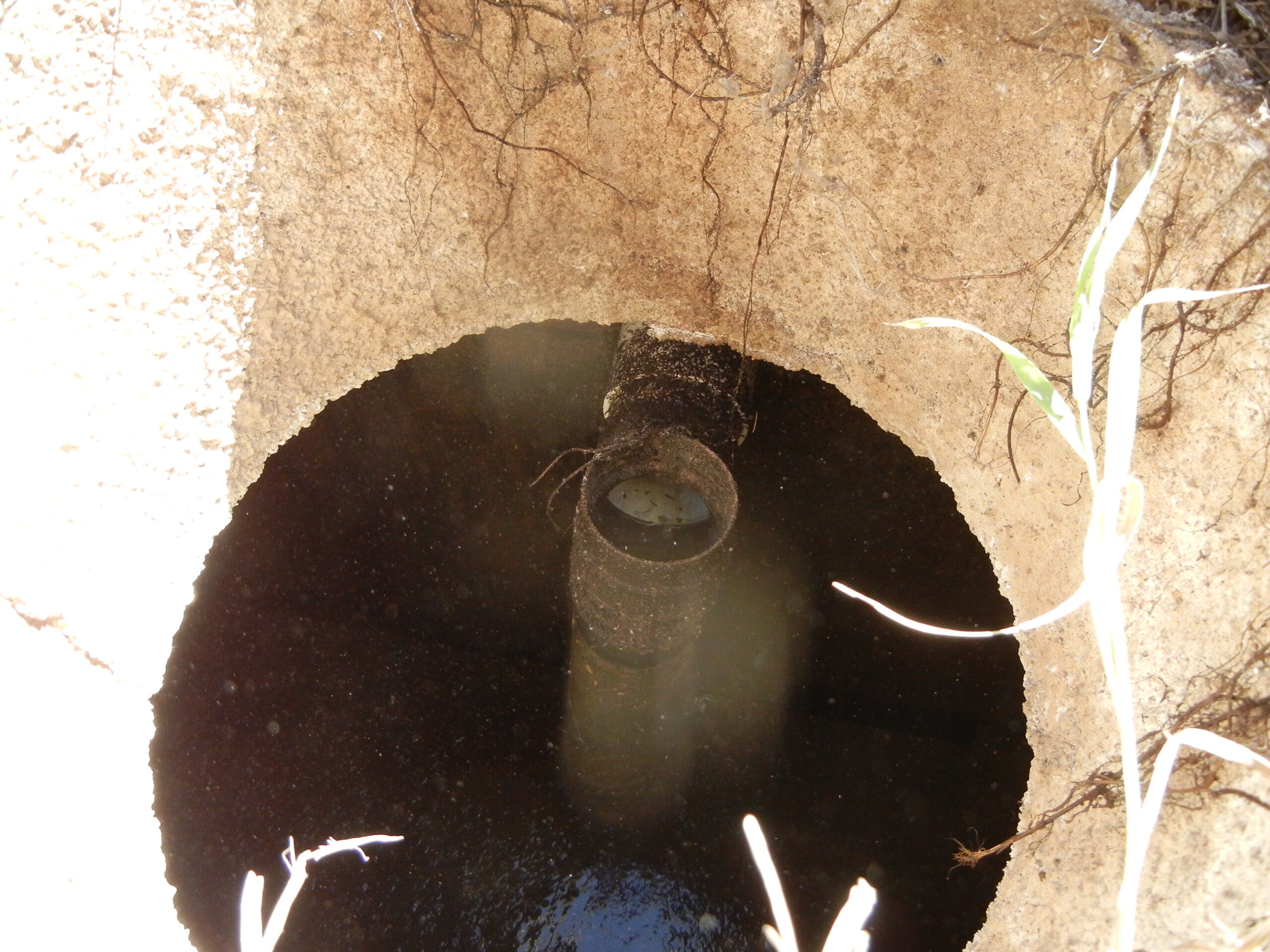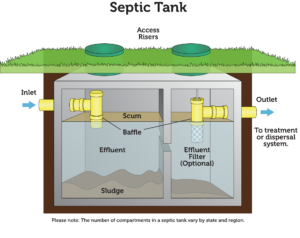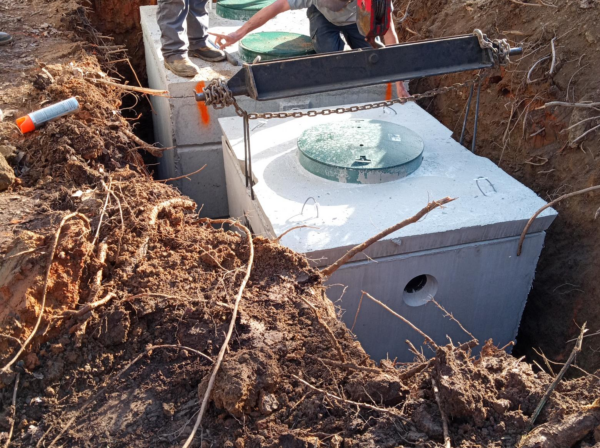“To Pump, or Not to Pump, that is the question…”

This is an age-old question that owners of septic systems seem to ask one another. Although misguided, there seems to be some sense of pride of ownership that the longer one can go without pumping their septic tank, the better, more robust system they must have. Not so. Please tell all of your friends!
A septic tank system needs regular maintenance, just like your car needs oil changes and spark plugs replaced, just like your HVAC system needs filters replaced and periodic checks by professionals. Think of your septic system as you would any other household system that needs some care and upkeep. Household wastewater contains disease-causing bacteria and viruses, as well as high levels of nitrogen and phosphorus. If a septic system is well-maintained and working properly, it will remove most of these pollutants. If not, a malfunctioning septic system can be a public health and environmental hazard by allowing exposure of harmful contaminants to humans, pets and the natural world. Not to mention, it is a violation of the law.

Figure from EPA
Conventional septic systems are designed to be relatively low maintenance, but low maintenance does not equate to NO maintenance. A septic tank system is essentially comprised of five basic components:
- A household collection system that removes all sewage from the dwelling and transports it out into the holding tank, or septic tank.
- The septic tank is where the treatment of the waste begins, and its routine maintenance is an important step in the functional lifespan of your system. From the septic tank, the liquid portion of the sewage, called effluent, exits the septic tank, and moves out to the third component.
- A distribution box, as the name implies, this box equally distributes the effluent as it moves out into the fourth component,
- A drain field or absorption trenches.
- Lastly is the soil, in which your septic system is installed, is the final step of treatment for a conventional septic system.
The septic tank works to “sort” the household waste as it allows for the contents to settle and separate. The solids settle down to the bottom of the tank, while the fats, oils, and greases float to the top. This action ideally results in no solids moving out into the drain field where they can potentially clog up the absorption trenches. If too much water is introduced into the septic tank at one time (i.e.., multiple consecutive loads of laundry), this can disrupt the settling time and potentially result in solids moving out into your drain field. Adequate settling time is important, so it is vital to keep this in mind in your routine household activities. Over time, the solids at the bottom of the tank accumulate and need to be removed. If the tank is not pumped out every three to five years, the holding capacity, and the ability to separate the waste will be diminished, thus creating a situation in which solids can more easily move into the drain field.
Septic tanks contain naturally occurring anaerobic bacteria which help break down solids in the tank and support the biological processes that treat human waste. Some people believe that they can reduce the frequency of septic tank pump outs by introducing “additives” to their septic system. There are different types of additives on the market. Biological additives add more bacteria to the tank, and in doing so, can create conditions in which the bacterial populations compete against each other, potentially causing negative effects. Enzymes are another type of septic tank additive. The enzymes are thought to aid in the breakdown of certain types of solids and limit the buildup of the scum layer (fats, oils, greases). Additives claiming to eliminate the need for pumping usually re-suspend solids, moving them to the drain field, thus clogging lines and leading to system failure. Septic tank additives are not regulated and there is no scientific evidence to support their benefit. A healthy septic tank should not need any additives, but again, it does need routine inspection and pumping every three to five years.
Some general rules of the road when it comes to caring for your septic system:
- Use less water. Space out laundry sessions throughout the week. This avoids overloading the system over a short period of time. Be sure to notice any leaking toilets or dripping faucets and repair them right away.
- Keep toxic chemicals from going down the drain. Properly dispose of solvents, paint, varnish, oil, and pesticides, instead of putting them down the drain. Use bleach and household cleaners sparingly.
- Keep solids out. Cigarettes, left over medications, handwipes, feminine hygiene products, paper towels, tissues, kitty litter, and other solid items should go into the trash, not your septic system. Left over medications could kill the “good” bacteria in your tank.
- Keep grease and fat out of your kitchen drain. Pour the oil into a container and dispose of it in the trash.
- Limit use of garbage disposal. Using a garbage disposal increases the amount of water and solids in your septic tank, requiring more frequent pumping.
- Divert runoff and drainage water. Never drain swimming pools or hot tubs into your septic system or drain field. Downspouts and roof runoff should be directed away from your drain field to limit hydraulically overloading the soil.
Regular maintenance pump fees can average between $250 to $500. This expense every three to five years is a bargain compared to the cost of repairing or replacing a failing septic system. Replacement costs can range from $5,000 to $20,000 or more depending on the type of system needed. A well designed, healthy septic system that is properly cared for should last a homeowner 20-30 years or more. Your septic system is a silent partner in keeping your home life humming. As lovable as your car, which you maintain regularly and as just as aggravating when it breaks down?! To find more information about being Septic Smart, go to: https://www.epa.gov/septic/septicsmart-week-quick-tip-videos.



